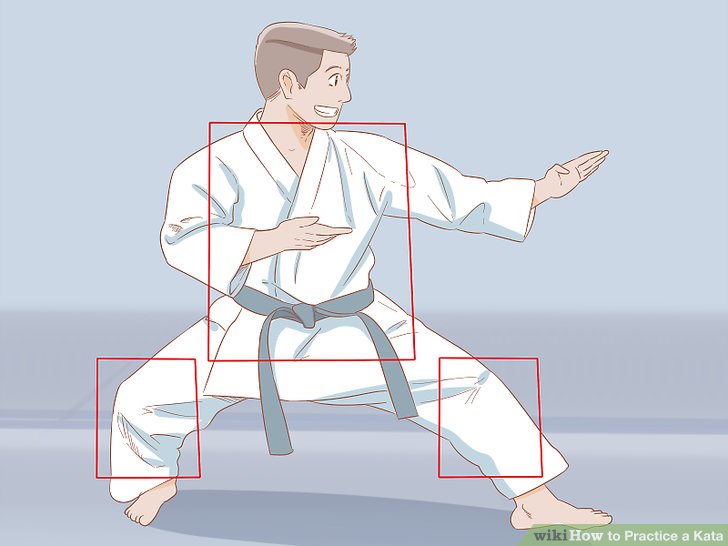In the last couple of months, I have watched and or participated in several martial arts competitions. One of the Moo Duk Kwan (Hwang Kee lineage), one of the Chung Do Kwan (Son, Duk-sung lineage), and two of the Shotokan Karate line. All of these practitioners did the Pyung Ahn/Pian/Heian forms (Kata, Hyung).
While the sparring was all about the same, with minor rule differences, and with the Karate tournaments allowed what I call the “whack a mole” technique which allows the taller competitors to just jump up and whack their opponents on the top of the head to score points, there wasn’t much difference in the sparring rules or quality. The general observation was you could tell the difference between the schools that focus on sparring, versus those that focus on forms, or a combination of the two.
But the patterns of the four while they were all doing nearly the same patterns, there was much to discuss regarding their quality and standards of them. One of the Karate tournaments followed the lead of the World Karate Federation® and all the competitors took great strides to show the technical standards set forth. Strong stable stances, even one-legged, techniques, transitions from one technique to another, timing, breathing, performance-based of their style and focus, strength speed, and balance to round it off. Overall they were motivated by the recent addition of Karate both Kata and sparring into the Olympic Games, the 3rd Asian martial art, following Judo (1964), and Taekwondo (1988).
The 2nd Karate tournament was much different, with just a few competitors who focused on the above standards. The main focus in the Kata at this tournament emphasized loud Kiai (kiap), high-pointed kicks (toes pointed straight out), and very wide, low stances. There was no standard as far as where the placement of either strike are kicks went, for the most part, they were focused on making the widest techniques, either very high or low, now middle. There was also no consistency as to uniform wear either, some wore traditional white or black Do-gi, while others wore what they call competition uniforms, but honestly, they remind me of those silky tops and bottoms we always saw Hugh Hefner wear, but with more colors.
The Moo Duk Kwan, although they were aligned with the founder of the Moo Duk Kwan was somewhere in between the 1st and 2nd Karate tournaments. Depending on the school (the instructor), they were either right on the mark as to the technical standards or they were all over the place. While this was much more obvious in the color belt division, it did not improve much more in the black belt divisions, except what are the “Soo Bahk” forms, the Pyung Ahn forms were not as standard as laid out in the Moo Duk Kwan publications such as the books by Hwang Kee Soo Bahk Do & Tang Soo Do: Volume 1 & 2 or their more modern and in my opinion better written White Belt – Red Belt Instructional Guides by Hwang Kee and his son H.C. Hwang.
The last tournament was a Chung Do Kwan one with the lineage of the 2nd Head of the Chung Do Kwan Son, Duk-sung. Most of these students had the correct arm, and foot placements, but their timing was as if they were all running somewhere. Every one of them from white belts to black belts. In Son’s book Korean he states: “A frequent question from students is, Why Forms?” Son then goes on to give his three “Whys.” The first is combinations of attacks and blocks’ so it becomes so habitual to him that he can use them without having to stop and figure out what’s next. For the most part, all of the competitors did know the sequences of techniques, and of course, as is usually the higher the rank, the more competitive they became.
The 2nd “why” according to Son was “precision of movements” and this became a bit hodgepodge depending on the instructor’s understanding of the patterns. Because they all focused on speed, thinking that it produced power, they lost some of the foundations in the “whys” of Son.
“Balance is the third why. Every movement in every form must be done in balance if the form is to be done correctly.”
So what is that standard as to being done “correctly?” The number one thing is “timing!” Son says in his book “Korean Karate The Art of Tae Kwon Do” © 1968 says that the timing for Kuk Mu 1-3 says the timing is as follows “There are 20 movements, and the time to do the form is 20 seconds.” That timing is the same as the Kicho Hyung of the Moo Duk Kwan. I tell my students (we do the Kicho Hyung’s) that it should be no less than 20 seconds and no more than 25 but ideally, 22-23 seconds. Anything below or above would be too fast or slow.
Regarding Pyung Ahn Cho, Dan Son states “ It consists of 22 positions, and the correct time to accomplish the form is 25 seconds.” Pyung Ahn 2 consists of 26 positions and ought to take 30 seconds, Pyung Ahn 3 is 18 positions and 28 seconds, Pyung Ahn 4 is 21 positions and should take about 30 seconds, and Pyung Ahn 5 is the same as 4! When I compare this standard to what I have seen at the recent Taekwondo tournament, they are finishing all the patterns nearly twice as fast!
Chul Gi 1 (Naihanchi /Tekki) according to Son has 22 positions and should take 23 seconds. Seeing many of the brown belts at this recent Taekwondo and Karate both were doing it by 15 seconds! Pal Sek (Bassai) had 43 positions and should take 45 seconds.
Ship Soo according to Son is 25 movements and 30 seconds, Chulgi 2 is 25 movements but 20 seconds (many more connection/fast motions), Son says Yun Bee (Wangshu/Empi)is 36 movements and 30 seconds. And Jaon (Jion) is 37 movements and about 30 seconds to complete.
According to the Moo Duk Kwan under Hwang Kee and now his son H.C. Hwang and the World Tang Soo Do Association they considered all the Pyung Ahn patterns to be in the 30-35 second range, a bit slower than the Chung Do Kwan standards under Son.
The Shotokan Standards as far as timing is for Pyung Ahn 1 (Heian) about 40 seconds, #2 and #3 40 seconds and 4, and 5 about 50 Seconds. Chung Do Kwan already sped up the patterns by about ten seconds. This means, each technique should take NO LESS than 1 second to complete, yet, what I have seen so much recently, is they run through it as fast as possible.
The students under some of these instructors are pushing the speed wrongly equating that to power. But speed and power are NOT the same. Especially, for color belts, the timing is much more important than the power. The black belt patterns are where we can showcase the power, and Chul gi/Naihanchi and Bassai/Pal Sek are where we showcase power and speed.
So, what were my conclusion on these four very different tournaments? When you have many instructors and students spread throughout the respective organizations, it’s clear those who adhered to a technical written standard and applied it to their training. If what you teach is for just health benefits, then a written manual isn’t much help if you teach uniformly. However, if you as an instructor are removed from the root of the system by many generations, each new instructor will add their spin and nuances to the system and its techniques. The ONLY way to avoid this is that each member must have a written technical standard. With facing positions, timing standards, the correct height for kicks, strikes, and blocks, and stance requirements.
In Gichin Funakoshi’s book Karate-Do Nyumon 空手道入門, The Master Introductory Text states “a person’s inability to perform the correct kata (Hyung) movements to his failure to master techniques can lead to alterations in the kata. Or due to a lack of diligence, students may learn a form incorrectly. Other people, who have not practiced for a long time, forget the original kata and make up their movements. Some mistake their personal instructors’ habits and idiosyncrasies for integral parts of the kata. We can say there are many factors that can lead to changes in kata, but it would be a shame to consider the resulting variations as constituting a truly different style.”
![]()

